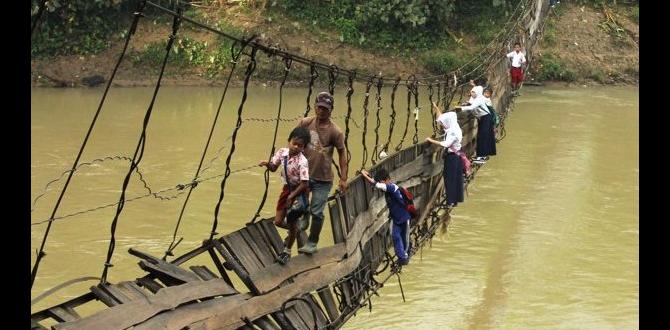Embark on a stress-free winter adventure in the Appalachians with this essential guide! We’ll cover packing, safety, activities, and comfort solutions, ensuring a memorable and enjoyable trip for everyone, including those needing extra support. Let’s prepare you for a fantastic Appalachian winter experience.
Planning a winter trip to the Appalachian Mountains can feel a bit daunting, especially if it’s your first time braving the cold and snow. You want to experience the breathtaking winter landscapes – think snow-dusted peaks and cozy log cabins – but also want to stay warm, safe, and comfortable.
The good news is, with a little preparation, a winter trip to the Appalachians can be incredibly rewarding. We’ll walk you through everything you need to know, from layering your clothing to finding the best spots for a warm cup of cider, making your journey a smooth and enjoyable one.
Your Ultimate Appalachians Winter Trip Guide: Essential Tips
The Appalachian region, with its rolling hills and majestic mountain ranges, transforms into a magical winter wonderland. From the crisp, clean air to the possibility of glistening snow-covered trails, it offers a unique charm distinct from its warmer seasons. Whether you’re seeking thrilling snow sports, peaceful scenic drives, or simply a cozy escape, preparing adequately is key to enjoying this beautiful season. This guide is designed to equip you with all the essential knowledge to make your Appalachian winter trip not just possible, but truly spectacular.
1. Mastering the Art of Layering for Appalachian Winters
Cold weather dressing is all about layers. This strategy allows you to adjust your body temperature by adding or removing clothing as needed, preventing you from getting too hot and then chilled. For an Appalachian winter trip, aim for three core layers.
The Base Layer: Wicking Away Moisture
This layer sits directly against your skin and its primary job is to wick away sweat. Choose synthetic materials like polyester or merino wool. Avoid cotton, as it holds moisture and can make you feel cold and clammy. Think long underwear tops and bottoms. For added comfort and discretion, especially for those who might need adult or child diapers during travel, materials that are breathable and soft against the skin are paramount. Modern incontinence products are designed to be thin and moisture-wicking, much like good base layers, offering peace of mind and comfort.
The Mid Layer: Insulation and Warmth
This layer traps body heat. Fleece jackets, down vests, or wool sweaters are excellent choices. You might wear one or two mid-layers depending on how cold it is. The goal is to create pockets of warm air around your body. If you’re prone to getting cold, consider a thicker fleece or a down-filled jacket for this layer.
The Outer Layer: Protection from the Elements
This is your shield against wind, rain, and snow. A waterproof and windproof jacket and pants are essential. Look for features like sealed seams, adjustable hoods, and breathable membranes (like Gore-Tex). This layer should be roomy enough to accommodate your base and mid-layers comfortably without feeling restrictive.
2. Essential Gear Checklist for Your Winter Appalachian Adventure
Beyond clothing, several key items will significantly enhance your comfort and safety during an Appalachian winter trip. Packing smart means you’re prepared for anything the mountains might throw at you.
| Category | Item | Why it’s Essential |
|---|---|---|
| Footwear | Insulated, Waterproof Boots | Keeps feet dry and warm, crucial for preventing frostbite and ensuring comfort during snow activities or simply walking on icy paths. Look for good traction. |
| Wool or Synthetic Socks (multiple pairs) | Provide warmth and moisture-wicking. Pack more than you think you’ll need, as damp socks can ruin your day. | |
| Gaiters (optional but recommended) | Prevent snow from getting into your boots, keeping your feet significantly warmer and drier on deeper snow days. | |
| Hands & Face | Waterproof Insulated Gloves or Mittens | Mittens are generally warmer than gloves, but gloves offer more dexterity. Choose based on your planned activities. |
| Liner Gloves | Thin gloves worn inside your main gloves for an extra layer of warmth or for when you need to remove your main gloves briefly. | |
| Warm Hat (Beanie) | A significant amount of body heat is lost through the head. Ensure it covers your ears. | |
| Scarf or Neck Gaiter | Protects your neck and face from biting winds and cold. A neck is often more versatile and easier to adjust than a scarf. | |
| Accessories | Sunglasses and/or Goggles | Snow glare can be intense. Goggles offer better protection from wind and snow during active pursuits. |
| Lip Balm with SPF | Cold, dry air and sun exposure can chap lips quickly. | |
| Sunscreen | Snow reflects the sun’s rays, increasing your risk of sunburn, even on cloudy days. | |
| Safety & Comfort | First-Aid Kit | A well-stocked kit for minor injuries is always a good idea. |
| Headlamp or Flashlight | Days are shorter in winter, and you may need light if traveling before dawn or after dusk. | |
| Hand and Foot Warmers (disposable) | A lifesaver for extreme cold or extended outdoor time. | |
| Travel-Friendly Personal Care Items | Consider discreet and comfortable options like modern adult diapers or child diapers for longer travel days or unexpected situations, ensuring peace of mind. Absorbent, breathable designs make a big difference. |
3. Prioritizing Safety on Winter Appalachian Roads and Trails
Winter in the mountains brings unique safety considerations. Whether you’re driving between destinations or exploring trails, being prepared can prevent dangerous situations.
Driving Safety Tips
Road conditions can change rapidly. Snow, ice, and fog can make driving treacherous. Always check local weather and road reports before setting out. The Federal Highway Administration offers excellent resources on winter driving.
- Vehicle Check: Ensure your vehicle is in good working order. Check tire pressure, tread depth, and consider snow tires or chains if traveling in heavily snow-affected areas.
- Emergency Kit: Pack a car emergency kit including blankets, non-perishable food, water, a flashlight, jumper cables, a first-aid kit, and a shovel.
- Fuel Up: Keep your gas tank at least half full to avoid running out of fuel and to help prevent fuel lines from freezing.
- Slow Down: Reduce your speed significantly and increase your following distance.
- Braking on Ice: If you start to skid, ease off the accelerator. Do not slam on the brakes. Steer gently in the direction you want to go.
Hiking and Trail Safety
Winter hiking requires different approaches than summer treks. Trails can be covered in snow or ice, making navigation more challenging and increasing the risk of slips and falls.
- Know Your Limits: Choose trails suitable for your fitness level and winter hiking experience. Shorter, well-marked trails are best for beginners.
- Inform Someone: Always tell someone your hiking plans, including your route and expected return time.
- Navigation: Carry a map, compass, and GPS device, and know how to use them. Cell service can be unreliable. Download offline maps from services like AllTrails.
- Weather Awareness: Mountain weather can change drastically. Monitor the forecast and be prepared to turn back if conditions worsen.
- Stay on Trails: Avoid shortcuts, especially in snow, as they can lead to getting lost or encountering hidden hazards.
- Hydration and Snacks: Even in the cold, staying hydrated is crucial. Pack high-energy snacks like nuts, dried fruit, and chocolate.
4. Embracing the Great Outdoors: Winter Activities in the Appalachians
The Appalachians come alive with winter activities. Whether you prefer adrenaline-pumping adventures or serene nature walks, there’s something for everyone.
For the Thrill-Seekers
- Skiing and Snowboarding: Many resorts across the Appalachians, such as those in West Virginia, North Carolina, and Virginia, offer excellent slopes for all skill levels. Consider places like Snowshoe Mountain (WV) or Sugar Mountain (NC).
- Snowshoeing: A fantastic way to explore snow-covered trails. It’s more accessible than skiing for many and allows you to enjoy the quiet beauty of the mountains. Many state parks offer rentals and guided tours.
- Cross-Country Skiing: Glide through scenic trails at your own pace. Look for groomed trails in national forests and parks.
- Ice Skating: Some towns and resorts offer outdoor ice-skating rinks, providing a classic winter experience.
For Serene Exploration
- Scenic Drives: The Blue Ridge Parkway and Skyline Drive (weather permitting) offer stunning panoramic views of snow-dusted peaks. Always check road closures before you go. The National Park Service provides essential updates.
- Winter Wildlife Viewing: With fewer leaves on the trees, spotting wildlife can be easier. Keep an eye out for deer, foxes, or even eagles.
- Photography: Capture the unique beauty of the Appalachians in winter – the frost on trees, the stillness of the snow, and the dramatic mountain vistas.
- Cozy Cabin Stays: Sometimes, the best winter activity is enjoying the warmth of a cabin with a fireplace, a good book, and a warm drink.
5. Finding Comfort and Convenience: Packing Tips for Specific Needs
Travel comfort is paramount, especially in challenging weather. For some, this includes planning for personal care needs. Modern incontinence products have come a long way, offering discreet and effective solutions for adults and children.
For Adults Needing Incontinence Support
Modern adult diapers are designed for maximum absorbency, odor control, and discretion. When packing for a winter trip, consider these points:
- Absorbency Level: Choose products appropriate for your needs. Higher absorbency is ideal for longer travel times or cooler weather which can sometimes affect bladder control.
- Breathability: Look for breathable materials that help prevent skin irritation and keep you comfortable, especially important when layering clothing.
- Discretion: Many products are designed to be thin and fit snugly under clothing, providing confidence and preventing bulkiness.
- Quantity: Pack enough for your entire trip, plus a few extra just in case. It can be difficult to find specific brands or types in smaller mountain towns.
- Travel Packs: Some brands offer discreet travel packs or smaller quantities that are easy to pack and carry when on the go.
For Families with Children
Traveling with children, especially those who use diapers, requires extra organization. Winter travel adds another layer of complexity with bulkier clothing.
- Size and Fit: Ensure you have the correct size diapers for your child. A poor fit can lead to leaks, which are especially unwelcome in cold weather.
- Protection: Consider thicker or overnight diapers for long journeys or overnight stays.
- Wipes and Disposal Bags: Pack plenty of gentle wipes. Biodegradable disposal bags are useful for soiled diapers when you’re away from facilities.
- Layering for Kids: Children also benefit from the layering system. Their base layers should be moisture-wicking.
- Snacks and Entertainment: Keep kids happy and comfortable with familiar snacks and activities for downtime or car rides.
By addressing these personal care needs thoughtfully, you can ensure a stress-free and comfortable experience for all family members, allowing everyone to focus on enjoying the beauty of the Appalachians.
6. Where to Cherish the Winter Ambiance: Appalachian Destinations
The Appalachian region spans multiple states, each offering unique winter experiences. Here are a few popular areas to consider:
- Great Smoky Mountains National Park (NC/TN): While higher elevations can bring significant snow, lower areas offer milder winter hiking and stunning misty vistas. Visitor centers provide condition updates.
- Shenandoah National Park & Blue Ridge Parkway (VA): Famous for its scenic drives, but be aware that sections of Skyline Drive and the Blue Ridge Parkway can close due to ice and snow. Check NPS alerts regularly.
- West Virginia’s Snowshoe Mountain Resort Area: Known for its abundant snowfall and excellent ski slopes, this area is a winter sports paradise. The surrounding towns offer cozy lodging and dining options.
- Western North Carolina Mountains (Asheville Area): Offers a blend of outdoor activities, charming towns, and cultural attractions. It’s a great base for exploring trails, enjoying local food, and visiting craft breweries.
- Adirondack Mountains (NY – Eastern Appalachian Fringe): While technically a separate range, often grouped with broader Appalachian region travel. This area offers extensive winter beauty, including frozen lakes and vast forests ideal for snowshoeing and cross-country skiing.
7. Staying Connected and Informed
Winter weather can be unpredictable. Staying informed is crucial for safety and to make the most of your trip.
- Weather Apps: Utilize reliable weather apps that provide real-time updates and forecasts for mountainous regions.
- Local Resources: Check the websites of national parks, state parks, and local tourism boards for advisories, road closures, and event information.
- Emergency Contacts: Have important phone numbers easily accessible, including local emergency services (911), park ranger stations, and your accommodation provider.
- Cell Service: Be aware that cell service can be spotty to non-existent in many parts of the Appalachians, especially at higher elevations or on remote trails. Download offline maps and important information.
Frequently Asked Questions About Appalachian Winter Trips
Q1: Is it safe to drive in the Appalachians during winter?
Driving in the Appalachians during winter can be safe if you are prepared. Always check road conditions and weather forecasts before traveling, ensure your vehicle is equipped for winter (good tires, emergency kit), and drive cautiously, reducing speed and increasing following distance, especially on mountain roads and bridges which tend to freeze first.
Q2: What are “winter tires” and do I need them for the Appalachians?
Winter tires are specifically designed with a rubber compound that stays flexible in cold temperatures and a tread pattern that provides better grip on snow and ice compared to all-season tires. While not always mandatory, they are highly recommended for winter travel in snowy or icy mountainous regions like the Appalachians, significantly improving traction and safety.
Q3: How cold does it get in the Appalachians during winter?
Temperatures in the Appalachians during winter can vary significantly by elevation and specific location. Daytime temperatures often range from the low 20s (°F) to the low 40s (°F), while nighttime temperatures can drop well below freezing, sometimes into the single digits or negative Fahrenheit, especially at higher elevations. Snowfall is common, particularly in higher mountainous areas.
Q4: What should I do if I get lost while hiking in the Appalachians in winter?
If you become lost, stay calm and try to retrace your steps if possible. If not, stay put to conserve energy and make yourself visible. Use a whistle to signal for help (three short blasts is a universal distress signal) and provide your location if you have cell service. If you have a GPS device, use it to find your bearings. Your survival kit items, like a emergency blanket and headlamp, will be crucial.
Q5: Are there any special considerations for packing adult diapers for a winter trip?
Yes, for winter trips, it’s advisable to pack a few extra adult diapers as cooler temperatures can sometimes affect bladder control. Ensure you choose thick, absorbent, and breathable options for comfort. Packing them in waterproof bags within your luggage can also prevent them from becoming damp if other items get wet.
Q6: Can I still hike in the Great Smoky Mountains in winter?
Yes, hiking is possible in the Great Smoky Mountains National Park during winter, but with significant precautions. Many higher elevation roads and trails may be closed due to ice and snow. Lower elevation trails are more accessible. Always check the park’s official website for current conditions, closures, and weather forecasts before you go, and be prepared for icy conditions even on lower trails.




